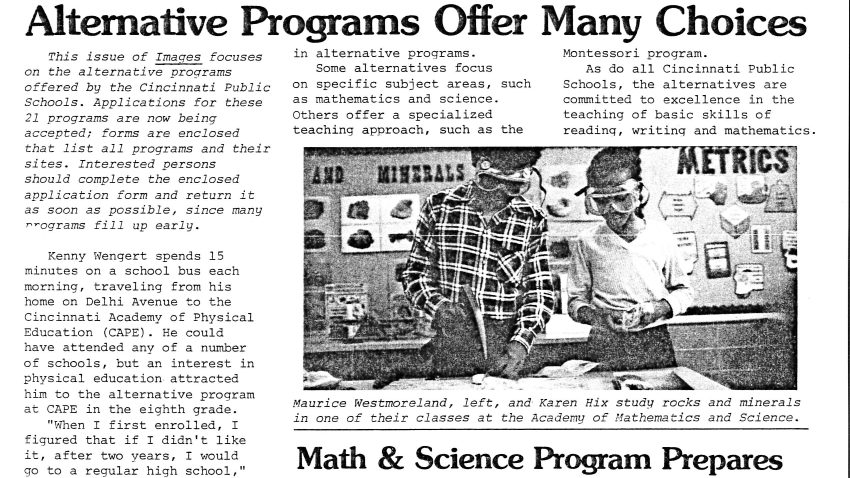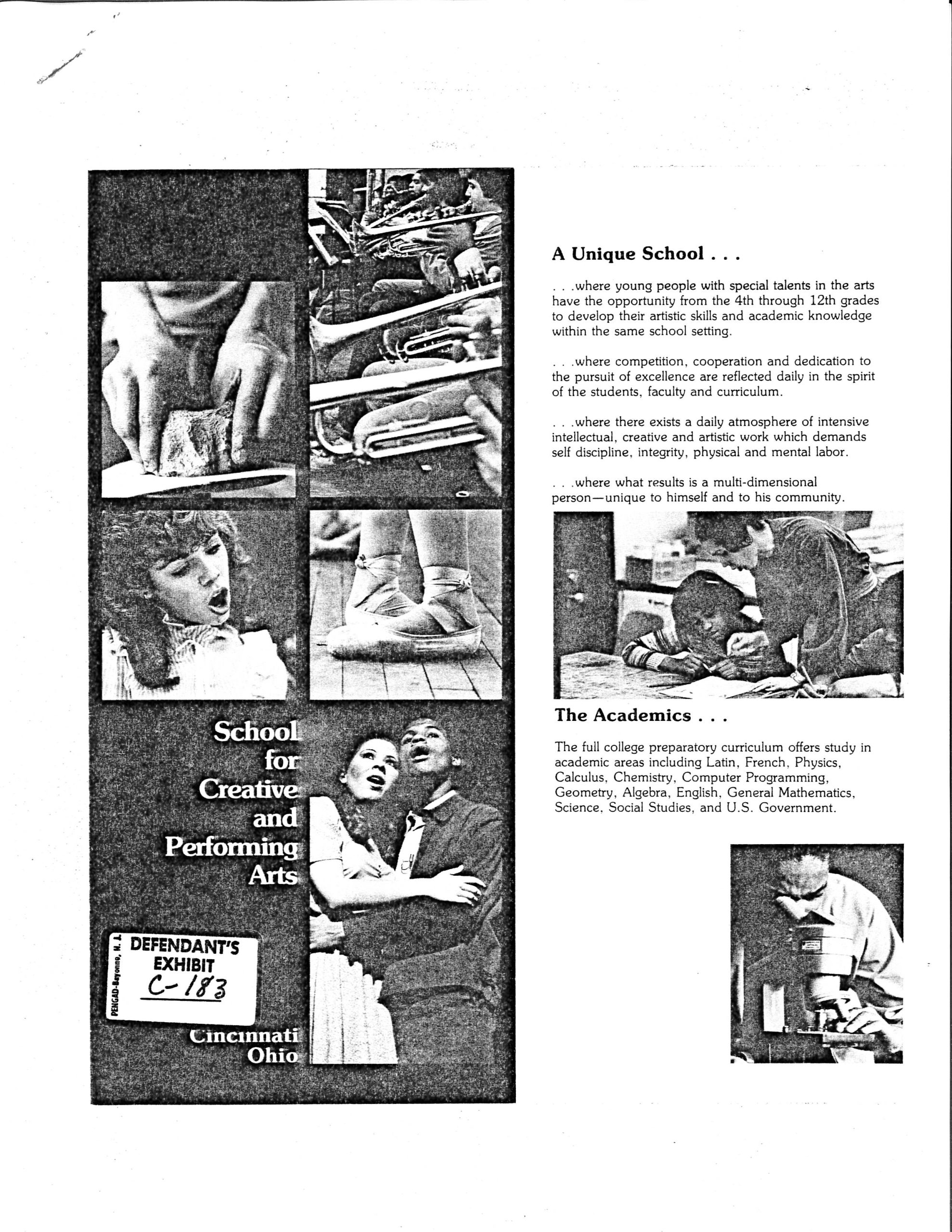Last November, the University of Cincinnati Libraries announced the award of an Archives Grant from the National Historical Publications and Records Commission to the Libraries’ Archives and Rare Books Library (ARB). This grant supports the archival processing of records related to the lawsuit Bronson v. Board of Education of the City School District of the City of Cincinnati maintained by the local branch of the National Association for the Advancement of Colored People (NAACP) and donated to the University of Cincinnati in the 1980s.
History of alternative programs and schools
Alternative programs and schools in Cincinnati Public Schools existed prior to the Bronson v. Board of Education lawsuit and continued to grow in numbers as the case proceeded. These programs were designed to give students more opportunities in the classroom compared to the standard taught subjects. These were voluntary programs and open to students of all ages.
These programs were:
- Elementary College Preparatory
- Individually Guided Education
- Math and Science Academy
- Fundamental Academy
- French
- German
- Spanish
- Montessori
- City-Wide Learning Community
- Junior High College Readiness

These schools were:
- Applied Arts Academy
- School for Creative and Performing Art
- Cincinnati Academy of Physical Education
Ties to desegregation
The alternative programs and schools in the 1970s attempted to integrate students through racial balancing; this meant each school would have an equal percentage of students across racial lines. The goal was to ensure students of all races could be included. As these programs were voluntary, the results varied, but school desegregation remained a goal with the increase of alternative programs. The board of education had first attempted to select locations of programs in mixed-race neighborhoods in order to provide more equal access. This did not always occur, and some programs were located in majority Black or White neighborhoods.
In the 1984 final settlement of Bronson v. Board of Education, it was decided that Cincinnati Public Schools had the freedom to decide how they wanted to desegregate the schools and chose to focus on the increase of alternative programs and schools. They believed that unique opportunities at schools across the district would result in a large number of student transfers. The district would receive additional funding from the state to enlarge the programs and create new ones. If a program was unable to see a change in racial composition after a year, funding would be cut off.
The board of education established a detailed plan for the next four years and set goals to transfer over a thousand students from schools with student populations reflecting over 90% of students of one race. The locations of new programs would be selected in areas of racial isolation and students accepted into them could be bused if they did not have transportation.

Final results
By 1991, the deadline of the settlement, the court found that the Cincinnati Public School system was able to reach their target score on the Taeuber Index of Dissimilarity by transferring students to schools with alternative programs. However, the alternative programs at Burton and Bond Hill Schools did not see changes to the schools’ racial composition after the seven years, and as a result the district decided to cancel those programs at those two schools since they would not be able to receive any more funding. After the settlement was dismissed, many of the alternative schools and programs continued to provide students with new opportunities that still exist today.
This project has been made possible in part by grant RH-104772-24 from the National Historical Publications and Records Commission (NHPRC). Any views, findings, conclusions, or recommendations expressed in this blog post do not necessarily represent those of the NHPRC.

